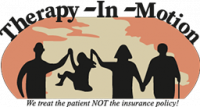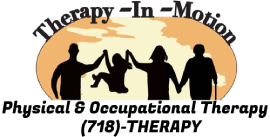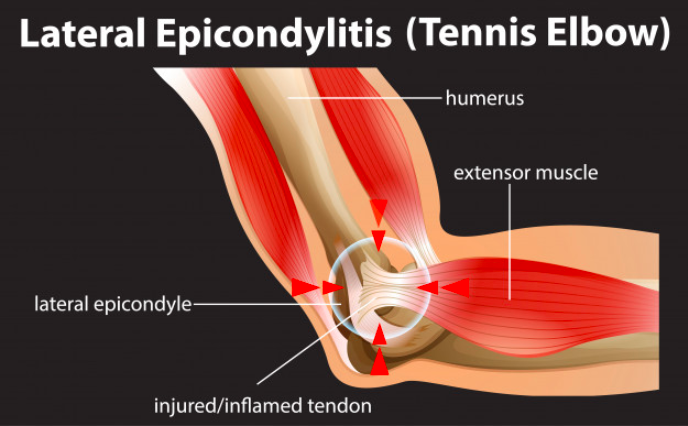
The Tennis Elbow Ultimate Guide: What It Is, Symptoms, Treatment, and Home Exercises
By: Dr. Abe Kopolovich, DPT, MBA, JD-IP

Tennis elbow may be the cause of your discomfort if it is felt on the outside of your elbow.
It is a common condition that can affect people of all ages, but it is most common in adults between the ages of 30 and 50 and is specially common in racquet sports, it can also be seen in workplace injuries, particularly among painters, carpenters, and plumbers.
Before starting our Ultimate Guide on Tennis Elbow, with the epicondylitis definition, its symptoms, treatments and home-approved physical therapy exercises, we’ll review a few basics:
What is Tennis Elbow?
Epicondylitis (tennis elbow), also known as lateral epicondylitis, is an overuse injury that causes inflammation of the tendons that attach the forearm muscles to the outside of the elbow.
This is a kind of tendinitis that results in swollen tendons, and affects the elbow and arm. The tendons in your lower arm are bands of strong tissue that attach the muscles to the bone. Tennis elbow is a condition that can occur even if you have never been near a tennis court, despite its name.
Alternatively, tennis elbow may result from any repeated gripping activity, particularly those that involve the thumb and first two fingers. The most frequent cause of elbow discomfort for patients to visit their doctors is tennis elbow.
Epicondylitis recovery time varies depending on the severity of the injury. Most people take 6 to 12 months to heal but every case is different.
What are Tennis Elbow Symptoms

According to the American Academy of Orthopedic Surgeons, typical signs and symptoms of tennis elbow include pain and burning on the outside of the elbow and weak grip strength. The pain may be worse when gripping or lifting objects. The “tennis elbow feeling” may also include:
- Weakness in the grip
- Tenderness on the outside of the elbow
- Swelling on the outside of the elbow
- Crepitus (grating sensation) when moving the elbow
Symptoms develop over time and may gradually worsen over weeks or months.
Lateral Epicondylitis Treatment
The first steps in treating tennis elbow are reducing inflammation and resting the irritated muscles and tendons. Ice and compression may also help reduce inflammation and pain.
Once inflammation subsides, you can begin gentle exercises to strengthen the muscles of the forearm and prevent recurrence. Be sure to check with your doctor or therapist to determine when you are ready to begin therapy exercises.
However, if any flat spots or abnormal shaping are still apparent, some intervention may be required to correct the problem. To be absolutely sure of the normalcy of your baby’s head shape, please consult your physician.
Most cases of tennis elbow can be treated with non-surgical methods, such as:
- Rest: Avoiding the activities that caused the injury is important for allowing the tendons to heal.
- Ice: Applying ice to the elbow for 20 minutes at a time can help reduce inflammation and pain.
- Nonsteroidal anti-inflammatory drugs (NSAIDs): Over-the-counter NSAIDs such as tennis elbow remedies as ibuprofen or naproxen reduce inflammation and pain.
- Physical therapy: A physical therapist can teach you exercises to strengthen the forearm muscles and tendons and improve your range of motion.
- Corticosteroid injections: In some cases, corticosteroid injections may be used to reduce inflammation and pain.
If non-surgical treatments are not effective, surgery may be an option. Surgery is typically only recommended for severe cases of tennis elbow that have not responded to other treatments.
Lateral Epicondylitis Exercises
Lateral epicondylitis exercises are an important part of treatment for this common overuse injury. These exercises can help to strengthen the forearm muscles and tendons, improve range of motion, and reduce pain and inflammation.
There are a variety of lateral epicondylitis exercises that you can do. Some of the most common exercises include fist clench, supination with a dumbbell, wrist extension and flexion and towel twist.
Fist Clench
Poor grip strength is a common symptom of tennis elbow. Improving grip strength by building the muscles of the forearm can help improve ability to perform daily activities.
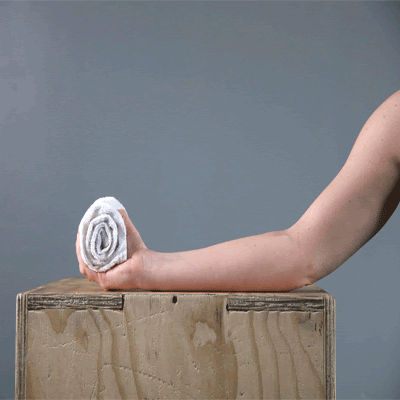
Equipment needed: table and towel
Muscles worked: long flexor tendons of the fingers and thumb.
Procedure:
- Sit at a table with your forearm resting on the table.
- Hold a rolled up towel or small ball in your hand.
- Squeeze the towel in your hand and hold for 10 seconds.
- Release and repeat 10 times. Switch and do the other arm.
Supination With A Dumbbell
The supinator muscle is a large muscle of the forearm that attaches into the elbow. It’s responsible for turning the palm upward and is often involved in movements that can cause tennis elbow.
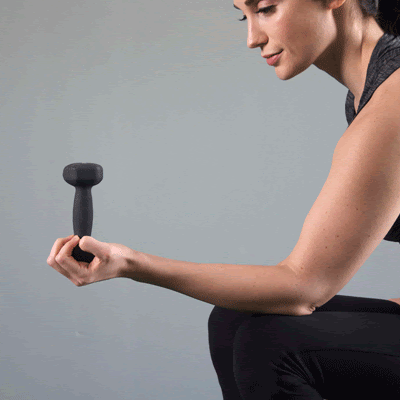
Equipment needed: table and 2-pound dumbbell
Muscles worked: supinator muscle
Procedure:
- Sit in a chair holding a 2-pound dumbbell vertically in your hand with your elbow resting on your knee.
- Let the weight of the dumbbell help rotate the arm outward, turning the palm up. Try to isolate the movement to your lower arm, keeping your upper arm and elbow still.
- Rotate the hand back the other direction until your palm is facing downward.
- Repeat 20 times on each side.
Wrist Extension
The wrist extensors are a group of muscles that are responsible for bending the wrist, like during the hand signal for stop. These small muscles that connect into the elbow are often subject to overuse, especially during racquet sports.
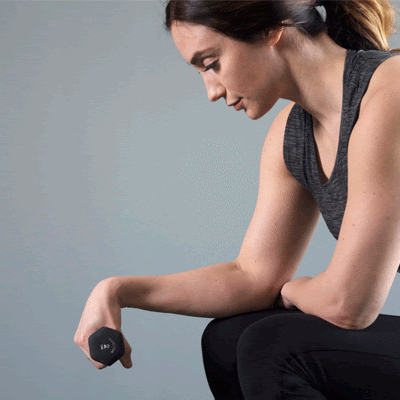
Equipment needed: table and 2-pound dumbbell
Muscles worked: wrist extensors
Procedure:
- Sit in a chair holding a 2-pound dumbbell in your hand with your palm facing down, resting your elbow comfortably on your knee.
- Keeping your palm facing down, extend your wrist by curling it towards your body. If this is too challenging, do the movement with no weight. Try to isolate the movement to the wrist, keeping the rest of the arm still.
- Return to the starting position and repeat 10 times on each side.
Wrist Flexion
The wrist flexors are a group of muscles that work opposite the wrist extensors. These small muscles that connect into the elbow are also subject to overuse, leading to pain and inflammation.
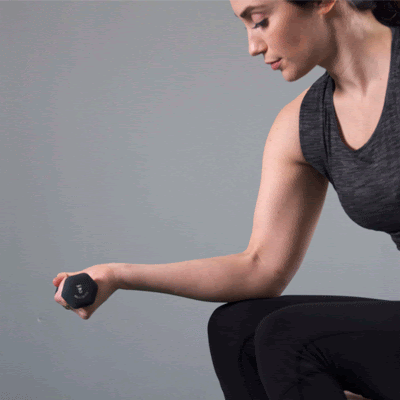
Equipment needed: table and 2-pound dumbbell
Muscles worked: wrist flexors
Procedure:
- Sit in a chair holding a 2-pound dumbbell in your hand with your palm facing up and elbow resting comfortably on your knee.
- Keeping your palm facing up, flex your wrist by curling it towards your body. Try to isolate the movement to the wrist, keeping the rest of the arm still.
- Return to the starting position and repeat 10 times on each side.
Towel Twist
The towel twist exercise is a great way to strengthen the wrist flexors, which are a group of muscles that work opposite the wrist extensors. These small muscles that connect into the elbow are often subject to overuse, leading to pain and inflammation.
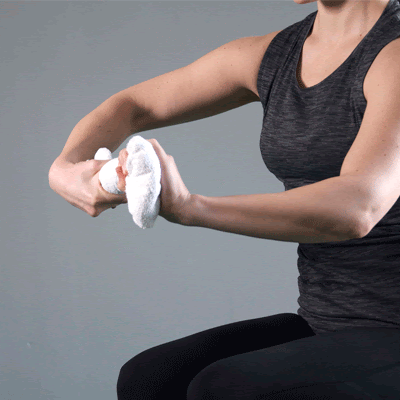
Equipment needed: hand towel
Muscles worked: wrist extensors, wrist flexors
Procedure:
- Sit in a chair holding a towel with both hands, shoulders relaxed.
- Twist the towel with both hands in opposite directions as if you are wringing out water.
- Repeat 10 times then repeat another 10 times in the other direction.
Additionally, here are a few things you can do to help prevent tennis elbow, such as:
- Warm up before activities that involve repetitive use of the forearm muscles and tendons.
- Use proper technique when performing activities that involve the forearm muscles and tendons.
- Take breaks when performing activities that involve repetitive use of the forearm muscles and tendons.
- Strengthen the forearm muscles and tendons.
- If you experience any pain in your elbow, it is important to stop the activity and rest. If the pain persists, see a doctor or therapist to rule out any other conditions.
Lateral Epicondylitis Exercises
If you have been experiencing tennis elbow symptoms for more than two weeks, or if your symptoms are severe, you should see a physical therapist.
You can consult a doctor before starting an exercise program by yourself. It’s important to have a full evaluation to rule out serious injuries such as a muscle or tendon tear.
Don’t begin activities until inflammation has subsided, as it may aggravate the condition. If pain returns after activity, rest and ice your elbow and forearm and consult a physical or occupational therapist to ensure you are doing the exercises correctly.
Often, changing the way you perform a daily activity can help decrease symptoms and your therapist can help you determine what movements may be causing pain.
If you got a lateral epicondylitis diagnosis, schedule an appointment with our expert therapists today to review your case in detail!


